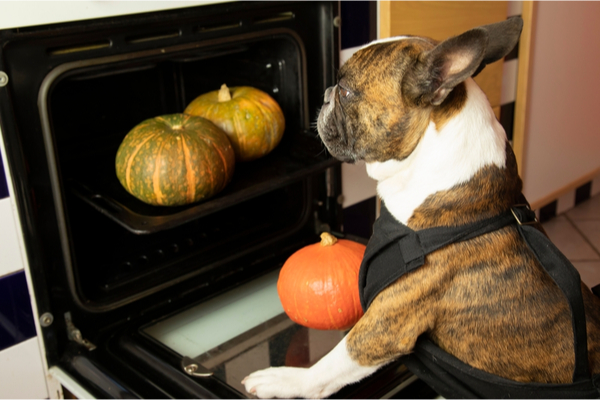The way you prep the vegetables is just as important as the vegetables themselves-chop small enough so your dog can’t choke. For optimal benefits, the veggies should be pureed. Veggies make a great snack or treat as long as your dog doesn’t have trouble digesting them.
If you’re cooking meals for your pooch, it’s also important to remember that even though vegetables are great for your pet, you need to keep veggie content to less than 25 percent of your dog’s diet. Too many vegetables can create issues, such as negatively changing the gut flora, or increasing alkalinity, which would cause kidney issues. When it comes to healthy diets, moderation and balance are key.
Here are some simple prep methods to get the most nutrient value out of veggies for your dog:
Blanching
Submerging vegetables quickly in boiling hot water and then very cold water, also known as blanching, is a great option for preparing vegetables. Blanching cleanses the surface of vegetables of dirt and retains both vitamins and flavor. It’s also a healthy alternative for humans because no cooking oil is needed.
Steaming
Steam is an excellent method for cooking veggies that doesn’t require submerging them in boiling water. Steaming cooks the vegetables through, while still preserving the bright color and flavor, and much of the nutrient content.
Pureeing
For maximum benefits and digestibility, veggies can be blended to a raw puree. Some vegetables, such as celery and spinach, do not need to be cooked before blending. Root vegetables like carrots and sweet potatoes should be blanched or steamed to make blending possible. Pureeing the vegetables breaks down the cell walls of the plant material, making them easier for dogs to digest.
Freezing
Cooking vegetables in large batches and storing them in the freezer is a great way to save time and effort. After pureeing, put the veggies in an ice cube tray, and just grab a cube when you’re in a hurry! Simple, and healthy.
—
Photo Credit: Lina Ermolaeva fotoart / Shutterstock.com
